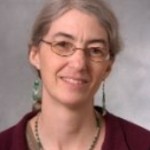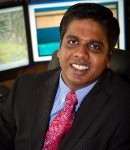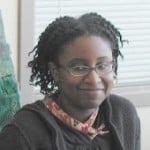 Soft spoken and with the wiry frame of an avid outdoorsman, Jason Gulley’s eyes light up when asked about caves. “They have a mystery around them,” he says. “Even with the oceans we know where the deepest parts are, but with caves, you never know how long or how hard it’s going to be to get where you’re going.”
Soft spoken and with the wiry frame of an avid outdoorsman, Jason Gulley’s eyes light up when asked about caves. “They have a mystery around them,” he says. “Even with the oceans we know where the deepest parts are, but with caves, you never know how long or how hard it’s going to be to get where you’re going.”
 Dr.-Ing. Rudolf “Rudy” Greuer of Houghton, Professor Emeritus of Mining Engineering at Michigan Tech, passed away on Sunday, January 18th, 2015 in Michigan’s Copper Country. Rudy was born on April 6th, 1927, in Guetzlaffshagen, German Pomerania. Rudy was a veteran of World War II, serving in the German armed forces prior to spending a period of Soviet captivity as a prisoner of war. After his military service and during his studies, Rudy worked as a miner in metal, coal, and potash mines in Germany and the United Kingdom. He attended the School of Mines in Freiberg, East Germany from 1948 to 1950. He later graduated with a Diplom (Masters) of Engineering in Mining Engineering from the Technical University at Clausthal, West Germany in 1953. He was granted the Doctor of Engineering in 1955 from the Technical University in Mining Engineering.
Dr.-Ing. Rudolf “Rudy” Greuer of Houghton, Professor Emeritus of Mining Engineering at Michigan Tech, passed away on Sunday, January 18th, 2015 in Michigan’s Copper Country. Rudy was born on April 6th, 1927, in Guetzlaffshagen, German Pomerania. Rudy was a veteran of World War II, serving in the German armed forces prior to spending a period of Soviet captivity as a prisoner of war. After his military service and during his studies, Rudy worked as a miner in metal, coal, and potash mines in Germany and the United Kingdom. He attended the School of Mines in Freiberg, East Germany from 1948 to 1950. He later graduated with a Diplom (Masters) of Engineering in Mining Engineering from the Technical University at Clausthal, West Germany in 1953. He was granted the Doctor of Engineering in 1955 from the Technical University in Mining Engineering.
 GMES PhD student, Elisa Piispa, has won an Outstanding Student Presentation Award at the American Geophysical Union’s annual meeting. The title of Elisa’s presentation was “Paleomagnetism of the 1.1 Ga Baraga-Marquette dykes (Michigan, USA)”. The AGU Annual meeting was held in San Francisco, CA, December 15-19, 2014. Piispa’s PhD advisor is Aleksey Smirnov.
GMES PhD student, Elisa Piispa, has won an Outstanding Student Presentation Award at the American Geophysical Union’s annual meeting. The title of Elisa’s presentation was “Paleomagnetism of the 1.1 Ga Baraga-Marquette dykes (Michigan, USA)”. The AGU Annual meeting was held in San Francisco, CA, December 15-19, 2014. Piispa’s PhD advisor is Aleksey Smirnov.
Indigenous Cultural Elements of Keweenaw and Isle Royale: Community Lecture/Discussion
On Tuesday, February 24, MTU Professor Emerita Susan Martin, expert on Prehistoric Archeology and ancient copper, will lead a discussion about ancient cultural elements of our region. She will be joined by Seth dePasqual, Cultural Resource Manager at Isle Royale National Park. The event is part of a monthly series of sessions on the Geoheritage and Natural History of the Keweenaw, at the Carnegie Museum in Houghton. The discussions are aimed at the general public, but discuss current research and science.
Since 1999, the A. E. Seaman Mineral Museum has recognized individuals for excellence in earth science education with the Charles A. Salotti Earth Science Education Award. Now the mineral museum has a new partner in selecting the awardee: the Michigan Earth Science Teachers Association (MESTA).
Thanks to the efforts of museum director Ted Bornhorst and Tiger Salotti, wife of the late Charles Salotti, MESTA has agreed to promote the Salotti Award, solicit nominations and select the awardee.
 On Tuesday, December 16, Professor Rolf Peterson, MTU expert on Wildlife Ecology, will lead a discussion titled “Animal Elements of Keweenaw Peninsula and Isle Royale”. The event is part of a monthly series of sessions on the Geoheritage and Natural History of the Keweenaw, at the Carnegie Museum in Houghton. The discussions are aimed at the general public, but discuss current research and science.
On Tuesday, December 16, Professor Rolf Peterson, MTU expert on Wildlife Ecology, will lead a discussion titled “Animal Elements of Keweenaw Peninsula and Isle Royale”. The event is part of a monthly series of sessions on the Geoheritage and Natural History of the Keweenaw, at the Carnegie Museum in Houghton. The discussions are aimed at the general public, but discuss current research and science.
The Earth, Planetary, and Space Sciences Institute
proudly presents:
Ezequiel Medici, MTU ME-EM Research Engineer
The EPSSI seminar for Monday, December 1, 4:00 p.m., M&M U113
“Shock Tube Recreations of Shock Waves and Jets Generated During Explosive Volcanic Eruptions”
Abstract: At the beginning of a suddenly explosive volcanic eruptions two types of phenomena can be observed, the formation of a shock wave immediately followed by a supersonic jet of expanding vapor-solid-liquid mixture. The intensity of the shock wave and the structure of the supersonic jet can carry a significant amount of information about the intensity and the dynamics of the volcanic eruption. Despite the hazard they represent to the immediate surrounding area of the volcano vent, these atmospheric shock waves and the subsequent sonic wave can be safely measured at a long distance from the vent. This characteristic makes the measurement of shock/sonic waves suitable for safe, real-time remote sensing of the conditions at the volcanic vent during the eruption. Preliminary results, based on the experiment performed on the shock tube, indicate a strong correlation between the energy released by the eruption, calculated by standard methods post eruption, and the intensity of the shock wave as measured through its pressure field. This correlation could ultimately lead to a more reliable model of shock/sound wave propagation which will serve as an early warning system for the air traffic control.
Immediately after the shock wave, an over pressurized jet mixture of vapor, solid particles, and liquid begins to expand. This mixture typically contains a relatively high concentration of solid particles of different size. To study the coupled interaction between the expanding gas and the particles, a series of analog explosive volcanic experiments using the atmospheric shock tube were performed. High-speed shadowgraph imaging of the expanding jet mixtures is recorded for different initial jet energy, particle sizes and particle concentrations. The study and observations of the interaction between the mixture of expanding gas and particles can elucidate the mechanisms acting during the initial stage of the formation of ash plumes or pyroclastic flows.
 On Tuesday, November 18, Professor Sarah Green, expert on Lake Superior, will lead a discussion titled Lake Superior’s history and future. The event is part of a monthly series of sessions on the Geoheritage and Natural History of the Keweenaw, at the Carnegie Museum in Houghton. The discussions are aimed at the general public, but discuss current research and science.
On Tuesday, November 18, Professor Sarah Green, expert on Lake Superior, will lead a discussion titled Lake Superior’s history and future. The event is part of a monthly series of sessions on the Geoheritage and Natural History of the Keweenaw, at the Carnegie Museum in Houghton. The discussions are aimed at the general public, but discuss current research and science.
Professor Green explains her discussion: “Lake Superior defines our region. It’s a powerful force that is both constant and changing. I will show how we can see day-to-day conditions on Lake Superior from buoys. I will also talk about how the lake has changed over the past hundred years and what we predict for its future. Bring your questions! What makes the beaches change from one day to the next? Why does the water level change from one year to the next? How does water move around the lake? What changes have you seen during the time you have lived here?”
The Carnegie Museum of the Keweenaw, located at Huron & Montezuma in downtown Houghton. Seminars are held in the recently restored Community Room on the ground level of this historic building. Lectures are free, open to the public, and barrier free (wheelchair accessible). For each monthly lecture, the museum will open at 6:30 pm for refreshments; lectures and discussion occur from 7:00 to 8:00 pm. Please contact the Museum for further information, 906-482-7140.
 While we’re able to enjoy timeless scenery as we travel in the United States, it’s important to realize that the soils and rocks forming the base of these transportation systems may not forever be stable.
While we’re able to enjoy timeless scenery as we travel in the United States, it’s important to realize that the soils and rocks forming the base of these transportation systems may not forever be stable.
In a new project led by Michigan Technological University, Thomas Oommen, assistant professor of geological and mining engineering and sciences, heads a team that is using advanced technology to develop a comprehensive management system to monitor our nation’s geotechnical assets—the ground that forms the base for the concrete, asphalt or steel that makes up our transportation system.
Read More
 Michigan Tech 1999 MS Geology Alum Gari Mayberry was featured in the Washington Post article “Gari Mayberry: Lessening the impact of natural disasters worldwide” She is employed by the U.S. Geological Survey (USGS) while working at the U.S. Agency for International Development (USAID). wHer work involves the Office of Foreign Disaster Assistance (OFDA) where she is leading and coordinating the U.S. government’s response to disasters overseas and mitigation of geological hazards.
Michigan Tech 1999 MS Geology Alum Gari Mayberry was featured in the Washington Post article “Gari Mayberry: Lessening the impact of natural disasters worldwide” She is employed by the U.S. Geological Survey (USGS) while working at the U.S. Agency for International Development (USAID). wHer work involves the Office of Foreign Disaster Assistance (OFDA) where she is leading and coordinating the U.S. government’s response to disasters overseas and mitigation of geological hazards.
Read her Alumni Profile: Gari Mayberry